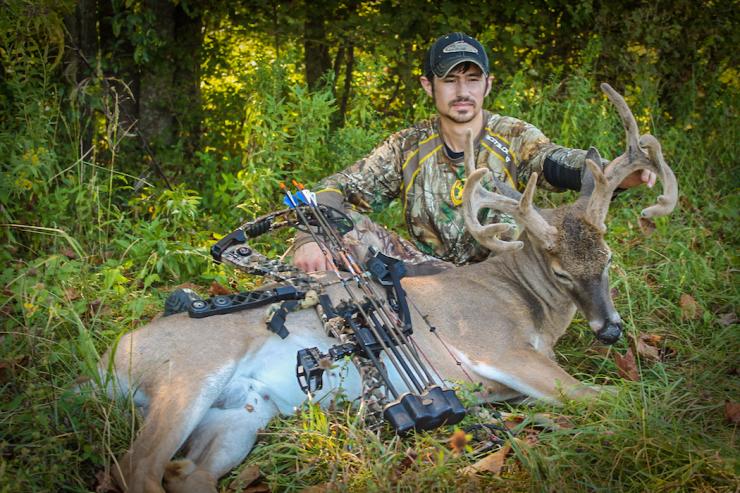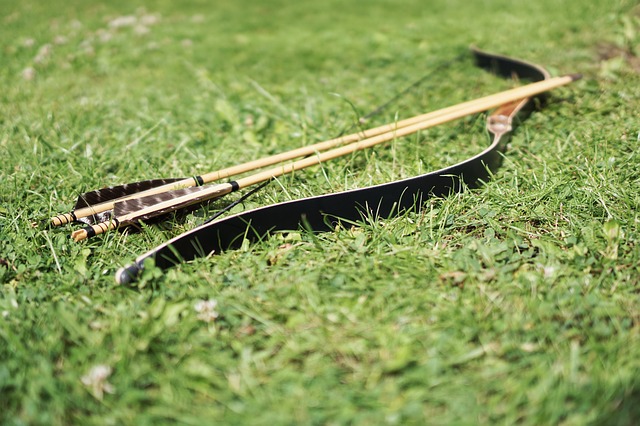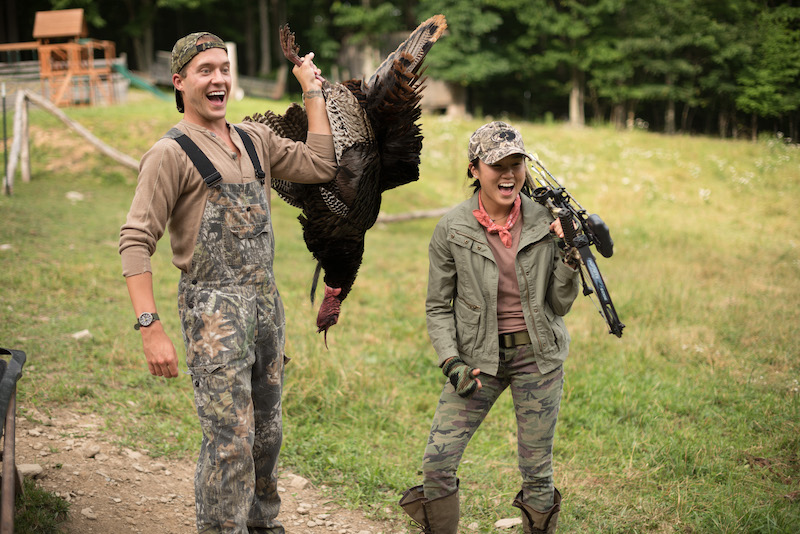
Most hunters are happy to let go of their axes by November. However, serious hunters know better. Winter is here and whitetails tend to be more predictable, so they will concentrate on smaller areas. Mid-December to early December is the best time for whitetail hunting. Before you go on a hunt, there are many things to keep in mind. These are some of them. These factors will help you choose the best hunting spot.
Food sources
There are a number of food sources for deer hunting in the late season. For example, if you're in a region where winter rye isn't yet harvested, you can rely on corn for late season sustenance. This crop has high levels of carbs, which is what deer need in order to live a long winter. Cornfields are not usually picked over by deer, since modern harvesting equipment leaves very little wasted grain. Standing corn can also be found, and is a good food source to late season deer.
Survival mode
After the rut, deer transition into survival mode and are looking for food. They will cluster together in groups near any food sources or nutrients left from harvest. This is the best time to hunt. You should sit in a location that has a source of deer food. You will be able to spot deer more easily if your hunting gear is good. And if you can find a good security cover, the late-season hunt is a hit!

The pressure zones
As the pressure on public lands decreases, hunters should look for a variety of food plots, fields, and woodlands. These are the best areas for hunters to hunt late in season because they can provide their nutritional requirements. When buck movement is apparent, hunters should move their stands to areas near food sources such as hayfields. For tree stands to be placed in the early and late seasons, hunters should concentrate on those areas with food sources.
High winds
Even though deer do not move at a constant pace in the late season, wind can still have an impact on their movement. In mild and moderate winds, deer typically move around the same amount. In severe wind conditions however, deer might concentrate on downwind tangles. It is a good idea, when hunting conditions are perfect, to move to higher elevations. This will help you avoid being confronted by wind-suppressed whitetails.
Solar cover
There are many areas that provide thermal cover, which is why late-season deer hunting is so popular. It is rare for deer to sleep in areas without thermal cover such as mature trees or open hardwoods. Here are some tips to help you make the most out of late-season hunting. It is important to first determine the temperature in your area before you look for areas that have thermal cover. Alternativly, you could hunt during the hottest part of the season.
Acorns
You should target bucks with acorns if you plan to bowhunt late in the season. If there are plenty of food, deer will gather in wooded areas. They will also stay where they find the acorns to eat. Acorns are a good source of fats, starch, and they won't fly very high or travel far to get there.

Turnips
It is best to have plenty of turnips when you want to hunt deer in the late autumn. Turnips are a great food choice for deer during winter because they give them the nutrition they need to survive long winters. The turnips become more tender and palatable due to the cold temperatures. The sweeter and more tender turnips taste best around October through May.
Radishes
Radishes are a good food choice for deer feeding in the late-season. The bright green leaves and stems of winter radish are visible above moderate snowfalls. Deer love the bright green color and the radish's taste. These radish types are tasty, easy-to grow, and offer weed control. According to Quality Whitetails magazine, the National Deer Association recommends planting radish in areas where deer are active.
Cover crops
You can make your hunting grounds more attractive to deer by planting high-quality forbs and legumes. These species can complement the natural vegetation of your hunting plots. They can also be cultivated with oats and winter wheat. These crops can provide deer with a rich and nutritious food source in winter and late fall, and also supplement their natural diets. People who enjoy gardening may want to try the Brassica genus. It will provide food and energy throughout the winter.
FAQ
Which state has more deer hunters than the other?
The state with the most deer hunters is Wyoming. It also sells the most hunting licenses annually.
The state with the second-most deer hunters is South Dakota. It is ranked third for the annual number of hunting permits sold.
New Hampshire is the state with the lowest number of deer hunters. It is last in the country for hunting license sales per capita.
Is it allowed to hunt bears in Alaska
Yes, bear hunting is legal in Alaska. To capture bears some hunters use traps. Other hunters use dogs to find bears.
The Alaska Board of Game regulates bear hunting. Hunters must obtain a bear tag before they go out into the woods.
Denali National Park Preserve has a lot of bear hunting. Special guided hunts allow tourists to take a bear hunting trip that costs a lot.
How much does it cost for a hunter to become?
Hunting can be expensive depending on where you live.
In some cases, you might only have to pay a small fee to access public lands.
Some states require permits or licenses before you may hunt.
Hunting prices vary depending on which type of firearm is used. A rifle is usually more expensive than a shotgun.
A license can range from $10-$50. Depending on the number of days you wish to hunt, you may need to purchase additional tags.
Hunting certain species requires a permit. The size and type of animal you are hunting will impact the cost of your purchase.
Wild turkey hunting can be expensive. You'll need to pay $150 for a tag.
Statistics
- Thanks to the 1937 Pittman-Robertson Act, an 11% excise tax was placed on the sale of firearms, which were then used for conservation. (stacker.com)
- Licenses dropped from a peak of roughly 17 million in the 1980s to 15 million in 2019, according to The Seattle Times. (stacker.com)
- In less than 20 years, Rhode Island saw a 40% drop in the number of hunting licenses for residents, according to The Valley Breeze. (stacker.com)
- - Percent of residents with paid hunting licenses: 0.7%- (stacker.com)
External Links
How To
How to teach my son to hunt
This is a common problem. Many parents want to teach their children how to shoot guns. However, they are not sure where to start. The first thing you should think about when teaching your child how to use a gun is safety. Make sure he knows what to do if there is an accident, such as getting shot. Also, make sure he is aware of the rules for shooting. He should be taught to keep his finger away from the trigger when he is ready to fire. You must immediately notify the hospital if your son accidentally shoots himself.
The next step is to teach him how to handle different types of weapons. This can include rifles and shotguns, pistols, airguns, and airguns. To help your kid choose the one that suits him best, it is important to know how each weapon works. Consider the weapon's size, weight, power, accuracy, and power when selecting a weapon. A.22 caliber rifle is a good choice for a starter rifle. It's small enough for beginners to hold, yet powerful enough to kill pests like squirrels. On the other hand, a 12 gauge shotgun is large enough for adults to hold comfortably while still having plenty of power to kill animals. Airguns can be operated quietly and easily, making them ideal for children learning to shoot.
Now, you can help your child practice shooting at targets. To determine which angle and position is best for him, he will need to try them all. Make sure he is familiar with how to properly clean and maintain the weapon.
Once your child is proficient in the basics of hunting, you can teach them how to hunt. There are many different ways to teach your kid how to hunt. Let him out in the wild with you. Another option is to buy a gun in a store and demonstrate how to load it. Still another way is to get a dog and teach your kid to train it. Dogs are very easy to train. Dogs can be fun to play with and can even become your child's best friend.
If none of these methods appeals to you, then you can hire someone to teach your child how. This method, however, is costly and requires a lot babysitting.